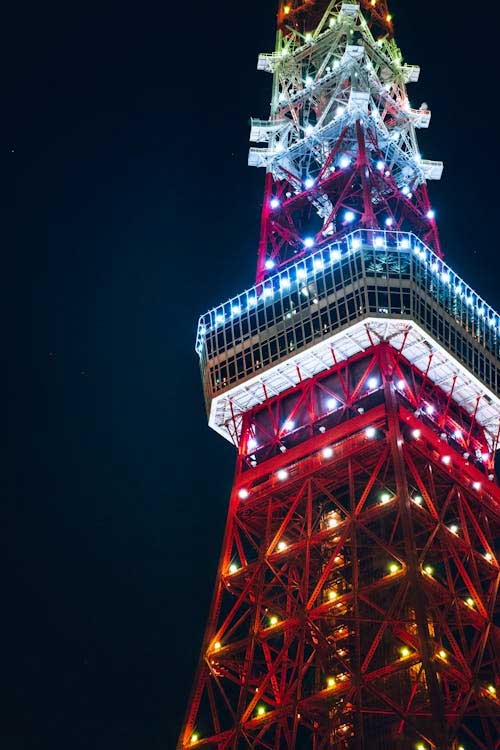
How Anime, Manga, and J-pop are Shaping Business Strategies and Consumer Behavior in Tokyo
Japanese pop culture, encompassing anime, manga, and J-pop, is not just a significant aspect of Japan's cultural identity; it is also a powerful economic force that shapes business strategies and consumer behavior in Tokyo and beyond. These cultural phenomena have a profound impact on various industries, driving innovation, consumer engagement, and market expansion. This article explores how anime, manga, and J-pop influence business practices and consumer behavior in Tokyo, highlighting the synergies between pop culture and commerce.
The Economic Power of Pop Culture
The economic influence of Japanese pop culture is immense. The anime industry alone was worth over ¥2 trillion (approximately $18 billion) in 2020, with manga and J-pop also contributing significantly to the economy. These sectors generate substantial revenue through direct sales, licensing, merchandising, and international exports.
1. Merchandise and Licensing:
Merchandising is a cornerstone of the anime and manga industries. Popular characters and series are licensed for a wide range of products, from clothing and accessories to household items and food products. This licensing extends beyond Japan, with international markets eager to consume Japanese pop culture merchandise. Tokyo, being the cultural hub, is at the forefront of this trend, with numerous stores dedicated to anime and manga merchandise, attracting both local and international consumers.
2. Tourism:
Anime, manga, and J-pop also drive tourism. Fans from around the world visit Tokyo to experience the cultural landmarks associated with their favorite series and idols. Iconic locations like Akihabara, known as the mecca of otaku culture, and the Ghibli Museum, dedicated to the works of Studio Ghibli, draw millions of tourists annually. This influx of visitors boosts local businesses, from hotels and restaurants to retail stores.


Business Strategies Leveraging Pop Culture
Businesses in Tokyo are adept at leveraging the popularity of anime, manga, and J-pop to enhance their market presence and engage with consumers. Several strategies highlight the innovative ways in which pop culture is integrated into business operations.
1. Collaborations and Cross-Promotions:
Collaborations between brands and popular anime, manga, or J-pop idols are common. These collaborations range from limited-edition products to themed events and promotional campaigns. For instance, convenience stores like Lawson and FamilyMart frequently collaborate with anime series to release exclusive merchandise and themed food items. Such collaborations create buzz and drive foot traffic to stores.
2. Themed Cafés and Restaurants:
Themed cafés and restaurants are another popular business strategy. Establishments like the Pokémon Café, Gundam Café, and various anime-themed pop-up cafés offer fans immersive experiences. These venues are designed to recreate the worlds of beloved series, providing unique dining experiences that attract fans and tourists. Themed menus, décor, and exclusive merchandise make these cafés popular destinations.
3. Entertainment Complexes:
Large entertainment complexes dedicated to anime, manga, and J-pop are also significant. The DiverCity Tokyo Plaza, home to the life-sized Unicorn Gundam statue, and the Nakano Broadway shopping complex, known for its vast array of anime and manga merchandise, are prime examples. These complexes offer a one-stop destination for fans, combining shopping, entertainment, and dining.
Consumer Behavior Influenced by Pop Culture
Japanese pop culture profoundly influences consumer behavior, shaping preferences, purchasing decisions, and brand loyalty. The engagement with anime, manga, and J-pop extends beyond passive consumption, fostering active participation and community-building.
1. Collectibles and Fandom:
Collectors and fandom culture play a crucial role in consumer behavior. Fans often seek to own a piece of their favorite series or idol, driving demand for limited-edition merchandise, figures, and memorabilia. This behavior is evident in events like Comiket, the world's largest doujinshi (self-published manga) fair held biannually in Tokyo, where fans and collectors gather to buy, sell, and trade unique creations.
2. Cosplay and Subcultures:
Cosplay, the practice of dressing up as characters from anime, manga, and video games, is another significant aspect of fan culture. Tokyo hosts numerous cosplay events and conventions, such as the Tokyo Game Show and AnimeJapan. These events foster a sense of community and allow fans to express their creativity. Businesses often participate in these events, sponsoring contests or setting up booths to promote their products.
3. Digital Consumption:
The digital consumption of pop culture content is also noteworthy. Streaming platforms like Crunchyroll and Netflix offer extensive libraries of anime series, while mobile apps provide access to manga and J-pop. This digital accessibility has expanded the reach of Japanese pop culture globally, influencing consumer behavior in Tokyo and beyond. Fans can engage with their favorite content anytime, anywhere, increasing the demand for related merchandise and experiences.

